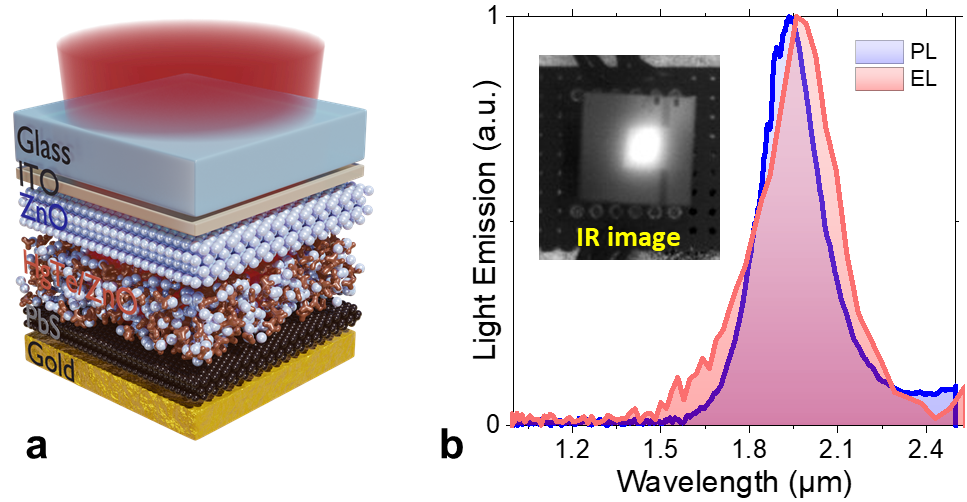Electroluminescence from nanocrystals above 2 micrometers
In collaboration with physicists from LPEM (CNRS/ESPCI/Sorbonne University), C2N (CNRS/Université Paris-Saclay), Synchrotron SOLEIL and ONERA, LOA researchers have designed, demonstrated and characterised the first nanocrystal-based LED operating above 2 µm. This technology will make possible highly efficient and low-cost light sources in this wavelength range, which are of enormous interest in various applications such as quality control in the food industry, airfield lighting for automatic aircraft guidance, or gas spectroscopy to, for example, monitor methane leaks.
See this work also highlighted in the news of IP-Paris.
These results are published in the article Electroluminescence from nanocrystals above 2 μm. J. Qu, M. Weis, E. Izquierdo, S. G. Mizrahi, A. Chu, C. Dabard, C. Gréboval, E. Bossavit, Y. Prado, E. Péronne, S. Ithurria, G. Patriarche, M. G. Silly, G. Vincent, D. Boschetto, E. Lhuillier, Nature Photonics 16, 38–44 (2022).
Pre-print archive HAL.



